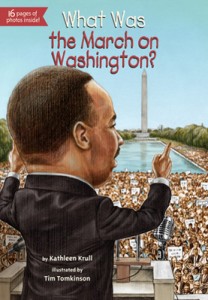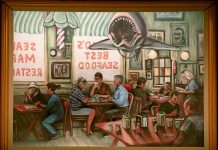 Every February, our nation celebrates Black History Month. It’s a time when we can look back and admire those influential African-Americans who, in myriad ways, have helped to shape the world as we know it.
Every February, our nation celebrates Black History Month. It’s a time when we can look back and admire those influential African-Americans who, in myriad ways, have helped to shape the world as we know it.
Sandwiched between the presidential long weekends, and the passing out of valentine cards, often the month-long celebration sneaks by as little more than a couple of TV spots appearing during the prime time commercial breaks.
For some of us, it is a little difficult to know the appropriate way to remember these remarkable individuals.
While their accomplishments are too numerous too count, and stretch far beyond the scope of the civil rights movement, it is with the brave men and women who fought to exact meaningful change in this arena that our hearts often sit during this time.
It has been said that their story is not my story, and their struggle, not mine. While I agree with this sentiment on a certain level, and can definitely appreciate the fact that there are many things I have been spared from, simply because of the color of my skin, I feel like the accomplishments of these individuals are American accomplishments as well.
I want my children to know of this time in our history, in the same way we want our youth to know about the Holocaust. On the one hand, we want to make sure these atrocities are never forgotten or repeated, teaching our children the ugly consequences brought on by hate and inequality. At the same, we want to inspire them through the stories of those who refused to accept what society had in mind for them, about the importance of standing up, not only for one’s self, but for what is right.
Our family recently read together the children’s book “What Was the March on Washington,” by Kathleen Krull.
One of the best books we have read together, this slim volume is a perfect read for those wishing to learn more about the civil rights movement, and honor those responsible.
While we all know about Dr. King, and the famous “I Have a Dream” speech depicted on the cover of the book, the pages within the cover teach about so much more.
While writing for kids, Krull managed to impart the information in a manner that was understandable to younger readers, without being made simple. My children, aged between 9-16, all enjoyed it, as did my husband and I.
Covering topics such as Jim Crow laws, the KKK, and lynchings, as well as movements such as the bus boycott, it explained, in a nutshell, what it was like living in America, particularly in the South, as a person of color. I found it to be very informative, and we had a great family discussion after each topic.
My only caution would be that, by their very nature, some of the topics and illustrations can be disturbing, and this may not be a book for a young child to read alone, without some parental involvement.
Once the stage was set, we learned about several civil rights leaders responsible for planning the March on Washington, many of whom, like A. Phillip Randolph and Bayard Rustin, are hardly household names, despite their incredible contributions. I found it to be a wonderful way to learn about some of the other amazing individuals, both black and white, whose story became a little washed out in the glare of Dr. King’s fame.
Of course, the book culminates with the delivery of King’s iconic speech.
Despite having agonized over his words, practicing, and wanting to get it just right, it was the moment when King put down his papers, and spoke from his heart about his dream for America, that his speech became one for the ages.
During this month of candy hearts and roses, this, instead, is the love story I want to share with my family – love for our fellow man, coupled with the courage to stand for what is right, and the knowledge that if we have both, nothing is impossible.
Edie Crabtree is an avid reader, and the mother of three active boys. She can be reached at crabmom3@gmail.com, or on the Facebook page, UnderCoverBookCorner.




